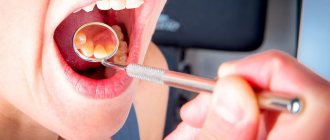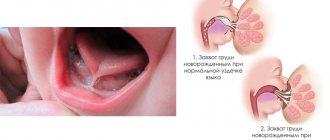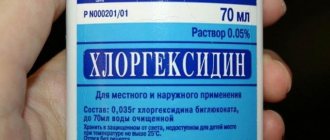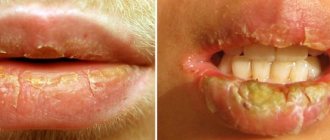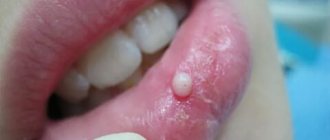Lesions of the oral cavity due to sexually transmitted diseases. How to avoid them?
Sexually transmitted diseases (STDs) are spread through various types of sexual activity. Oral intercourse - according to the charity AVERT - is common among sexually active people of all ages and orientations. As a result of such sexual intercourse, the disease can affect the tissues surrounding the contact area, and some infections affect the oral cavity more often than others.
The most common STDs that affect the mouth include herpes, chlamydia, gonorrhea and syphilis. However, remember that you can also become infected with diseases such as hepatitis A, B and C, as well as some gastrointestinal infections.
Transmission path
STDs that affect the oral cavity are transmitted primarily through body fluids. In most cases, the formation of oral ulcers is caused by body fluids released from the genitals of the infected partner. After such fluids penetrate the body, a local infection develops. Diseases can also be transmitted by contact of an infected person's saliva with their partner's genitals.
Symptoms
Symptoms depend on the type of STD. Oral gonorrhea is also called pharyngeal gonorrhea because it usually affects the pharynx, according to MedicineNet.
Intraoral symptoms that may indicate an STD include the following:
- Mouth ulcers, which may not be painful;
- Lip lesions similar to herpes or cold sores;
- Redness and soreness of the throat, difficulty swallowing;
- Tonsillitis;
- Redness with white spots, reminiscent of streptococcal sore throat;
- Whitish or yellow discharge.
According to the Student Health Service of the University. Brown STDs are often not accompanied by any noticeable intraoral signs. Therefore, it is important to be as aware as possible about the health of both your own oral cavity and the oral cavity of your sexual partner.
Treatment of STDs affecting the oral cavity
The treatment method depends on the type of STD the patient suffers from and its severity. For example, treatment for mild herpes may involve prescribing topical pain relievers to ease the pain of oral blisters and lesions while the immune system works to restore health. In more severe cases, antiviral drugs may be used to speed up healing. In addition, products that clean mouth sores, relieve pain, and promote healing, such as Colgate®Periogard® Mouth Rinse, may be used.
Antibiotics of the cephalosporin class are commonly used to treat oral gonorrhea; However, there is concern in the medical community about the emergence of bacterial strains that are resistant to such drugs, so it is important to follow your doctor's instructions very closely. Syphilis is most often treated with penicillin or its synthetic derivatives, according to Healthline, while oral chlamydia is most often treated with antibiotics such as azithromycin and doxycycline, according to the Centers for Disease Control and Prevention (CDC).
Forecast
If you have previously had any of the oral STDs described above and have been treated for them, you may get the same or a different disease again if you have sex with an infected partner. Herpes may lie dormant for some time and then become active again, especially in patients with a weakened immune system.
Precautionary measures
The only way to protect yourself from contracting STDs that affect the oral cavity is through safe sex practices, including safe oral sex. In addition, to reduce the risk of developing oral ulcers and infections, careful care of her health should be maintained.
Is it possible to get tooth decay by kissing?
Dental caries is caused by bacteria called Streptococcus mutans. And so many people think that if you French kiss a person who already has tooth decay, you can get infected from it and put your own teeth at risk.
But in reality, everything is not so terrible at all. The fact is that “caries bacteria” (let’s call them that for simplicity) cannot do much harm if a favorable environment for their harmful activities is not created in the oral cavity. For bacteria to start harming teeth, they need a large amount of carbohydrates - they take it from sugar that enters the oral cavity, that is, simply from the remains of sweet foods. They “digest” sugar (more precisely, sucrose) into organic lactic acid - and then this acid begins to literally eat away tooth enamel.
In addition, it is easier for acid to damage enamel if it lacks calcium, fluorine and phosphorus - the less of them, the faster the tooth will decay. And if there is no sucrose (or it was removed from the oral cavity in time by brushing teeth and other standard hygiene procedures), then the bacteria simply “sleep” and stop actively multiplying.
But still, what happens if two adults kiss and one passes on a certain amount of carious bacteria to the other? Dentists assure: nothing special, because the vast majority of the adult population of the planet already has these bacteria, and only proper eating behavior and compliance with hygiene rules can regulate their number.
It’s another matter if an adult kisses a baby: young children may not have “caries bacteria” in their bodies at all, and the enamel of teeth at such a tender age is not yet as strong as in adults. That is, even a “social kiss” with pursed lips can pose a danger to a child: after all, both mature people and tiny children have the habit of licking their own lips - and this is how infection occurs. However, this is how most people get cariogenic bacteria into their bodies - and this usually happens before the age of three. And not all children’s teeth begin to decay immediately after infection - this most often does not happen if the child is taught to brush his teeth, rinse his mouth, etc. And an adult, especially one who has had caries before, has nothing to fear at all - no fundamental he cannot get new cariogenic microflora or microfauna, no matter how you kiss!
In general, the VivaDent clinic advises not to be afraid of kisses on Valentine's Day, but of too many cakes at a romantic dinner. At the same time, don’t forget about brushing your teeth - this will protect your teeth, make your breath fresh, and kisses more pleasant!
Diagnosis of sexually transmitted diseases
Currently, diagnosing STDs is not difficult. To make a diagnosis in venereology practice, the following types of diagnostics are used:
- Examination of the patient. In the vast majority of cases, it allows the doctor to establish a preliminary diagnosis, which is subsequently confirmed by identifying the pathogen. Pathologies such as syphilis or molluscum contagiosum have quite specific skin manifestations that by external signs alone one can understand what kind of disease it is.
- Microscopy. A smear or scraping of epithelial cells is taken from the patient for analysis using direct or fluorescent microscopy. A smear for analysis is taken from the external parts of the genital organs, and a scraping is taken from the internal parts.
- PCR analysis. Polymerase chain reaction (PCR) allows you to identify a specific type of pathogen in the body. Today, this is the most sensitive method that allows one to detect a pathogenic agent even in small quantities.
- Blood analysis. A blood test is performed to determine the infectious pathogen or antibodies to it. A blood test is performed at least 2 weeks after infection. If you do this earlier, the pathogen or antibodies to it may not be detected due to their insignificant quantity. A blood test is performed if syphilis, HIV and viral hepatitis are suspected.
- Analysis of urine. To assess the condition of the urinary organs, a urine test is performed. A urine test can identify the causative agent of gonorrhea or thrush.
- Bacterial culture. A sample (smear) taken from the patient is applied to a nutrient medium so that the bacteria multiply and form colonies on a Petri dish. This is necessary for further testing of bacterial drug resistance to antibiotics. The patient will be prescribed the antibiotic to which the bacteria are least resistant.
Important! All sexually active people are recommended to undergo preventive screening for HIV, syphilis and hepatitis B every year, even in the absence of suspicious symptoms.
What STDs are transmitted through oral sex and what is their insidiousness?
It is important to understand that the risk of contracting an STD through oral sex is very high - the probability is 98%. The transmission of pathogens of sexually transmitted pathologies is facilitated by:
- the presence of damage to the oral mucosa;
- decreased immunity;
- presence of other diseases.
The tricky part is that there may be no symptoms of infection. And the incubation period may be prolonged. How long it takes for the disease to manifest depends on many factors, especially immunity and medication use. For example, when antibiotics are used to treat a previously identified infectious disease, syphilis occurs without symptoms for several months, or even six months. The patient is infected, but has no idea about it. And the disease becomes chronic, which is difficult to treat.
STDs transmitted orally include:
- syphilis;
- cytomegalovirus;
- gonorrhea (popularly known as gonorrhea);
- HPV;
- trichomoniasis;
- chlamydia;
- hepatitis;
- AIDS virus;
- herpes virus.
All these ailments negatively affect health. Men and women experience different consequences, from infertility to cancer and death.
Nongonococcal urethritis (NGU)
Non-gonococcal urethritis is more common in women. It is provoked in most cases by the bacterium chlamydia - Chlamydia trachomatis (30% of cases), less often by vaginal trichomonas Ureaplasma urealyticum or Mycoplasma genitalium.
Symptoms that can occur in both men and women are frequent urge to overfill the bladder, pain and burning when urinating. In addition, women may experience unpleasant vaginal discharge and purulent discharge from the urethra in men.
Bladder fullness
Discharge
How do STDs transmitted through oral sex manifest?
Women and representatives of the stronger sex may experience the following symptoms:
- discomfort in the oral cavity in the form of a sore throat (constant or occurring when swallowing), the intensity of which may vary;
- yellowish coating on the tonsils, tongue, cheeks;
- rash on mucous membranes;
- enlarged submandibular lymph nodes.
HIV and hepatitis after oral sex do not manifest themselves for a long time, having a detrimental effect on the entire body. Therefore, it is important to consult a gynecologist or dermatovenerologist after unprotected coitus with an unfamiliar partner.
Consequences of sexually transmitted infections
The symptoms that occur with STDs somewhat impair a person’s quality of life. In particular, this applies to such manifestations as painful and frequent urination and pain in the genital area. In addition, STDs also negatively affect a person’s mental health.
Some STD symptoms appear on exposed skin (eg, molluscum contagiosum). If the rash is on the hands or face, the disease can have a significant impact on a person's life, regardless of his or her occupation. Fortunately, all of these symptoms are temporary and treatable.
What happens if STDs are not treated?
Source: Womanizer WOW Tech/Unsplash
If an STD is left untreated, the infection spreads to other organs. Many people have heard about the devastating consequences of syphilis, which affects the nose, eyes and nervous system. Today, such cases are extremely rare, since medicine has learned to effectively cope with syphilis and other infections.
Most often, untreated STDs lead to damage to the genitourinary organs, causing the appearance of diseases such as cystitis, urethritis, inflammation of the kidneys and rectum. Long-term STDs can lead to male and female infertility.
Prevention of STDs
Photo: freepik.com
Prevention of STDs consists of following the following recommendations:
- Use protective contraception during sex. We remind you that a condom does not protect against all STDs, but it saves you from most of them.
- It is important to limit the number of sexual partners, at least during treatment. If the disease has been diagnosed, all partners should be notified.
- Maintain intimate hygiene. Do not wear other people's underwear and do not share a towel, washcloth or other personal hygiene products.
How is an STD diagnosed?
To identify a sexually transmitted disease transmitted through genital-oral intercourse, the doctor may prescribe a scraping test from the oral mucosa. It can be carried out:
- by bacteriological culture (an accurate method that allows you to find out not only the pathogen, but also its sensitivity to antibiotics) - costs 2100 rubles;
- using PCR (the method is 100% reliable) - costs from 300 to 1700 rubles, depending on the type of infectious agent;
- via ELISA.
To diagnose syphilis, specific serological reactions are used, and to detect hepatitis, antigens in the patient’s blood are determined. The cost of tests ranges from 600 to 1500 rubles (depending on the pathogen).


